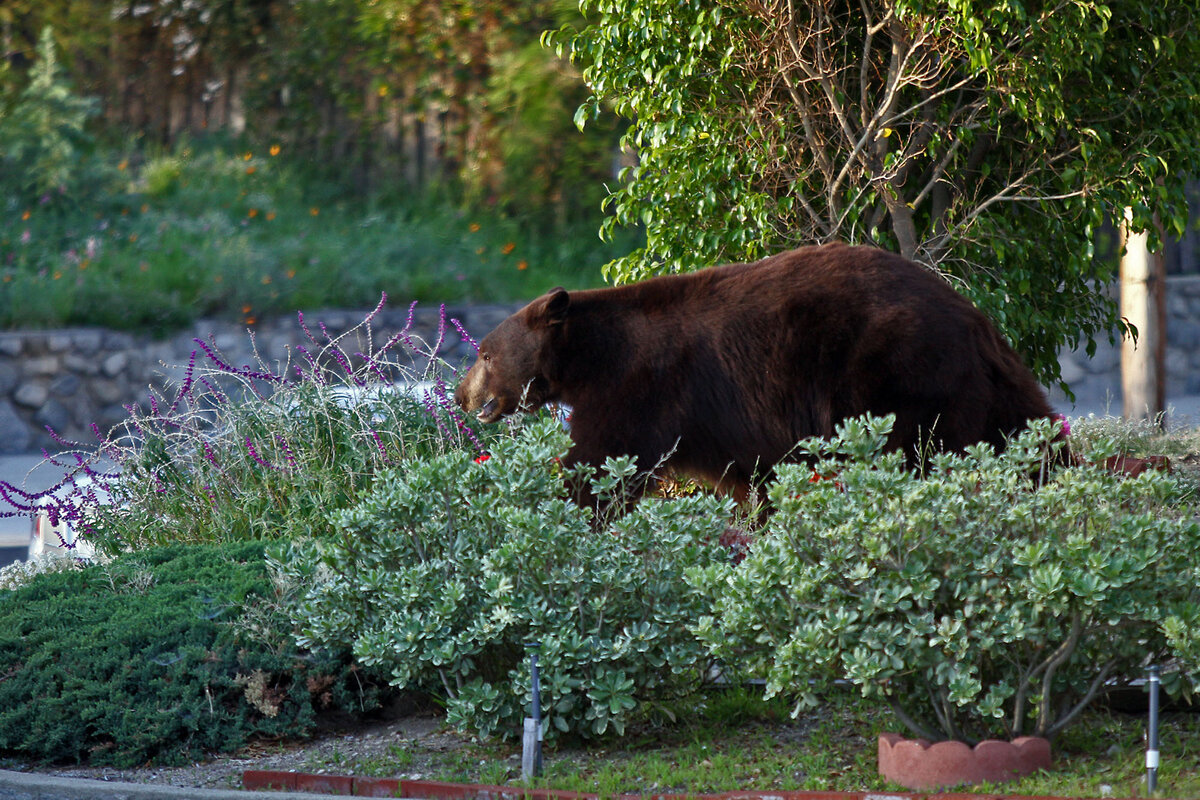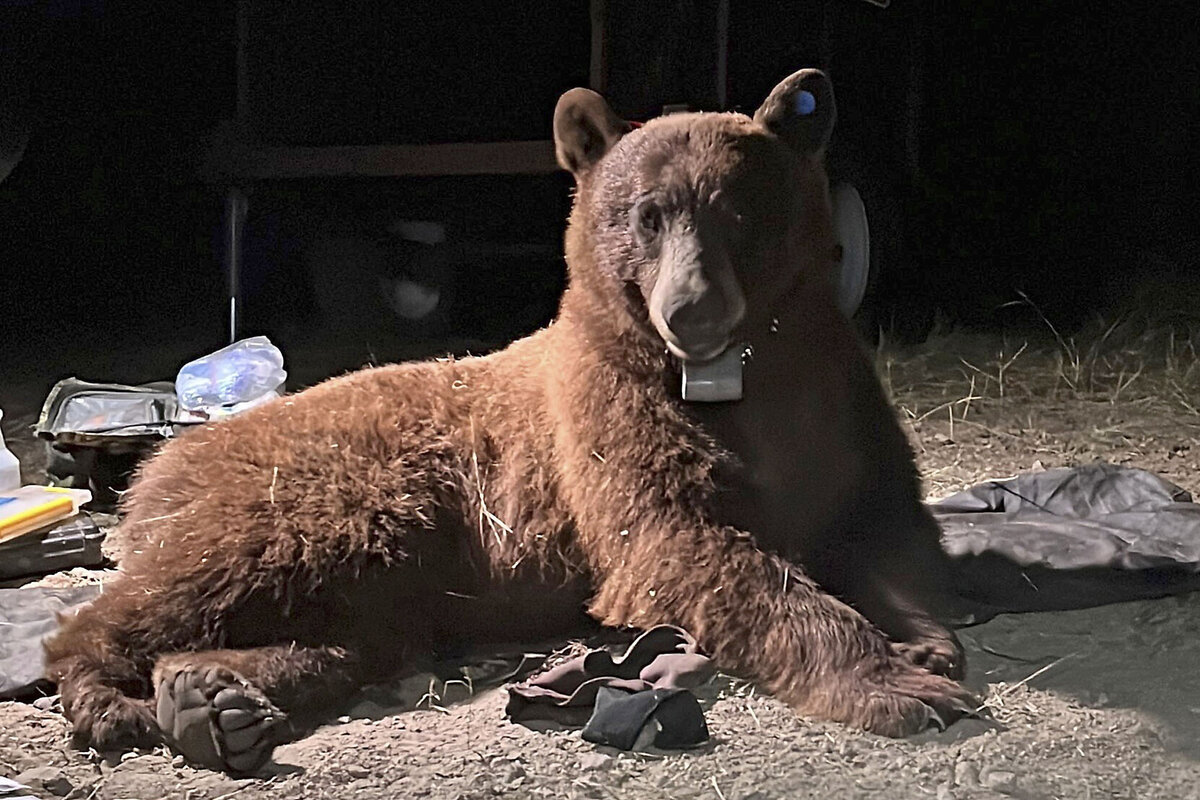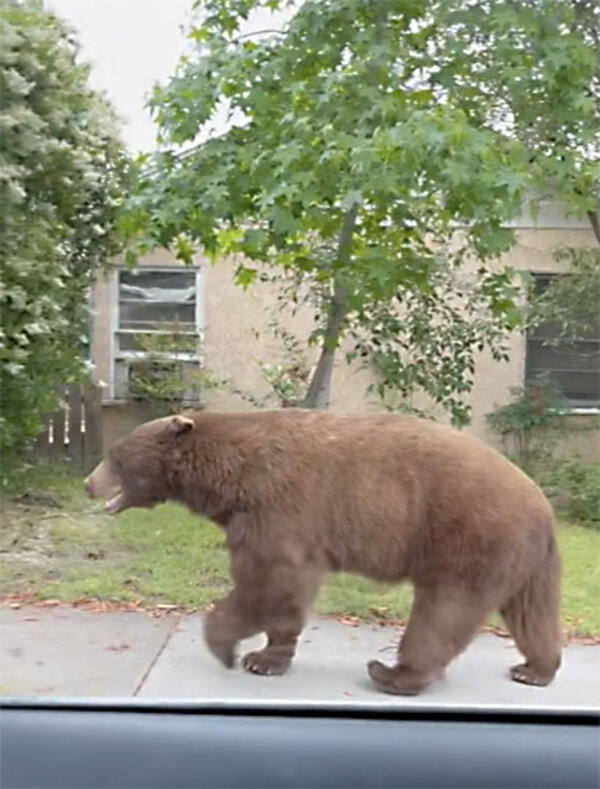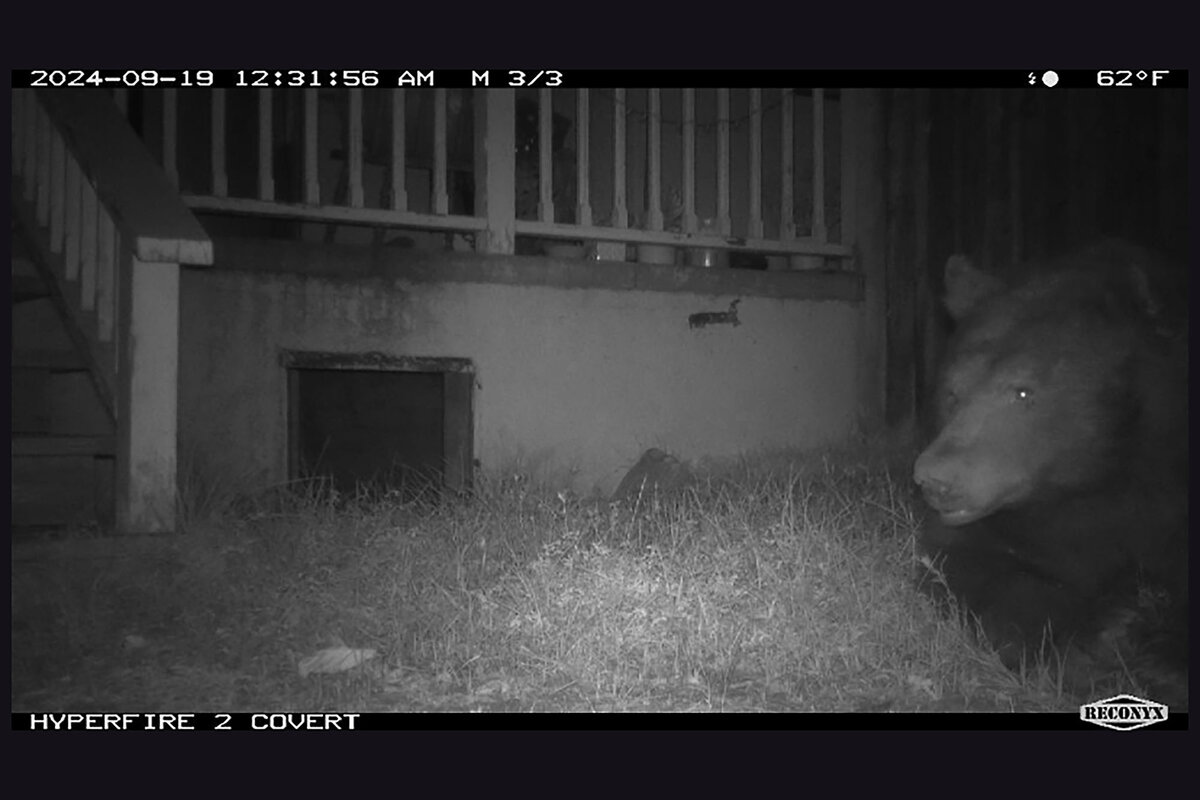Junior the bear settled under a suburban LA home. Why that’s a conservation win.
Loading...
| Los Angeles
“Junior” meanders down a residential sidewalk in Sierra Madre, California, unbothered by whoever is recording his stroll from the safety of a car. The viral video of the large black bear is the latest in what seems like a steady stream of bear encounters in the greater Los Angeles area.
Junior got his name from a couple under whose home the bear has decided to nest, and this week uniformed officers were checking out the property while reported from the couple’s front lawn about whether the bear will be removed.
Sierra Madre, which sits in the foothills of the San Gabriel Mountains on the eastern edge of LA, is a for human-black bear interactions. Police in this 3-square-mile suburb received 307 calls about bears in 2023 – triple that of the year before; and there were 91 from March through May this year, the Los Angeles Daily News reported in June.
Why We Wrote This
The proliferation of bear sightings in the nation’s second-largest metropolitan area creates viral videos and TV news fodder that charm humans. And underlying the excitement is an environmental victory.
A less formal survey (internet search) highlights an abundance of LA-area bear videos: One bear cools off in a , also in the San Gabriel foothills, on a 108-degree day. Another, a little farther west, cans in Pacific Palisades. And just last Sunday the Los Angeles Times ran a Page 1 to open doors.
Generally speaking, says a spokesperson for the California Department of Fish and Wildlife, trash is the greatest lure. And bears will return to places where they’ve been successful before – one bear, for instance, has been traveling back and forth for months between the San Gabriel Mountains and Malibu, where the county meets the sea.
With 40 million people, and between 50,000 and 80,000 bears roaming the state, human-bear encounters here are not novel – more than 6,000 incidents of bear-human conflict were reported from 2017 through 2022, more than doubling in the last two years of that period.
Officials say it may just be as much increased awareness – through improved reporting, home security cameras, and social media – as it is an increase in bear-human encounters.
Yet seeing one up close hasn’t lost its wonder.
More bear sightings means preservation success
Thirty-five miles across the county, where I’ve recently moved to the western edge of the San Fernando Valley, I glance up at my 11-year-old bichon frise, Rocky. He’s curled up on a blue velvet chair, sleeping in a sunbeam, oblivious to the wild creatures that share these streets with us. When I moved in over the summer, the first thing my neighbor suggested is that I carry pepper spray on my walks. Coyote protection, he said – everyone here has it.
My neighborhood, along with dozens more, is nestled in the Santa Monica Mountains – the world’s largest urban national park, which runs about 40 miles through the middle of Los Angeles to the Pacific Ocean. Just a few minutes away, the nation’s is being built over U.S. Highway 101, opening the door for more animal migration. And they have space to move around: 35% of Los Angeles County is preserved wildland. – close to the size of Rhode Island.
The idea of Los Angeles as a wildlife preserve disrupts its image of glitzy urban sprawl. But the topography of the Wild West rises up through a web of concrete roads dotted with clusters of glass high-rises. Drive down any of LA’s broad four- or six-lane boulevards lined with strip malls, and you appear to be heading into the base of a mountain range.
The wildlife that lives here should inspire us to be grateful, says Steve Searles, a bear expert who sees the prevalence of bears as good news. “If you have mountain lions, gray fox, bears, I think it’s the coolest thing in the world because it gives me some hope that [we haven’t destroyed it all].”
Mr. Searles spent decades working for Mammoth Lakes, in the Sierra Nevada, as a wildlife specialist, and advises communities throughout North America on how best to live alongside bears. He’s also written a about it: “What the Bears Know.”
It takes me a beat to understand the import when he starts talking about his recent trip to the Mojave Desert – yes, the desert – where bears have moved into a wind farm. Along with the windmills came huge underground tunnels and large ponds for cooling systems – habitat and water to the bears. Plus, people moving to the area to work the wind farm brought additional garbage. That’s bear food.
“The bears are really happy we’re here,” he says. “They’re really happy we’re developing lands. They think we’re great neighbors until they catch a bullet.”
Mr. Searles is still angry about Victor, on Aug. 21 in Mammoth Lakes after it injured a woman in a picnicking group that was taking selfies with the bear in the background. Officials decided Victor was too comfortable with humans. They discarded the bear , leading to outrage. The local Paiute Tribe then collected the body for a Native burial.
But bear attacks are rare. Since 1900, black bears have throughout North America. The first fatal bear attack in . Bears are a thousand times stronger than humans, but they avoid conflict, says Mr. Searles.
And if you bump into one? “Say a prayer,” he says. “Be grateful, not fearful.”








